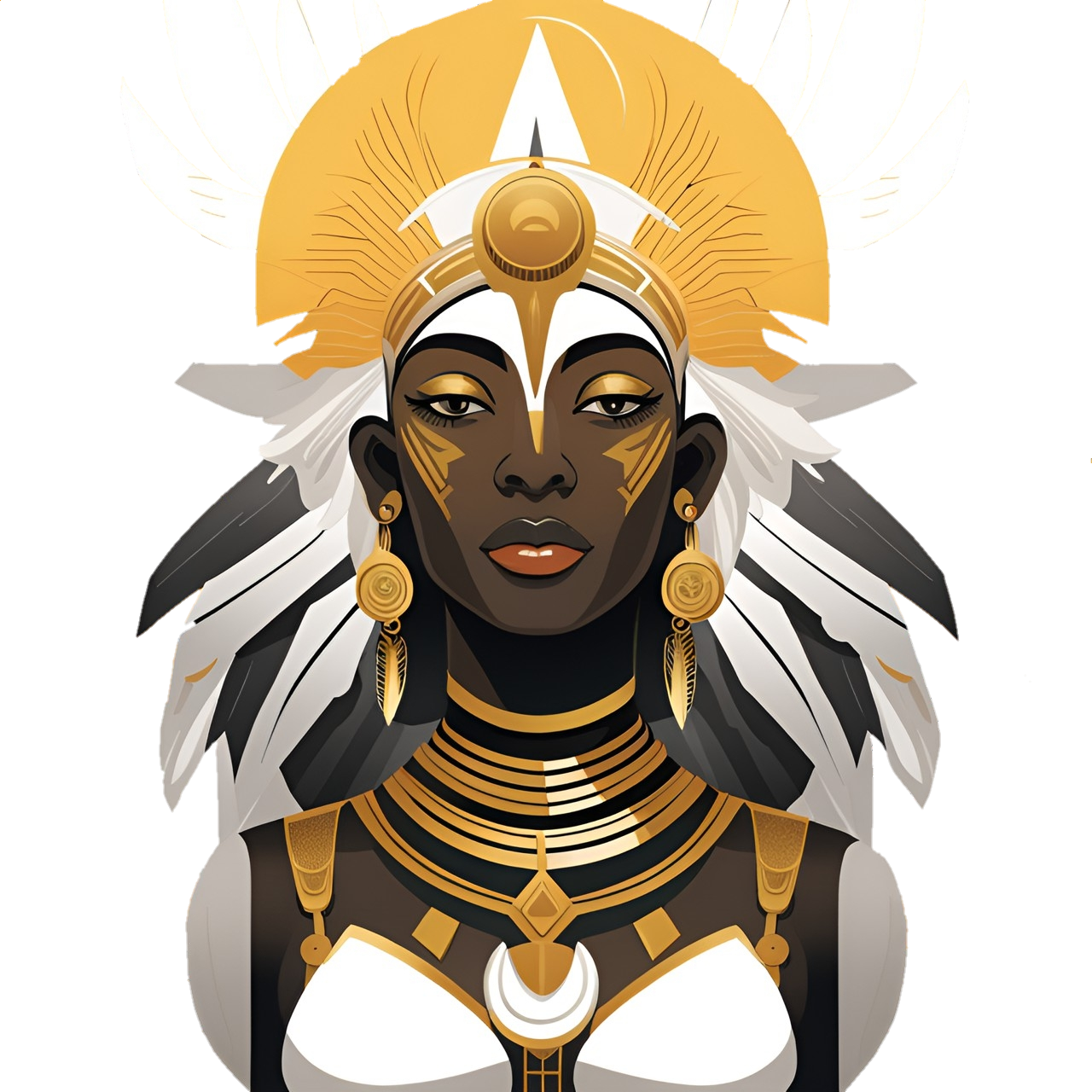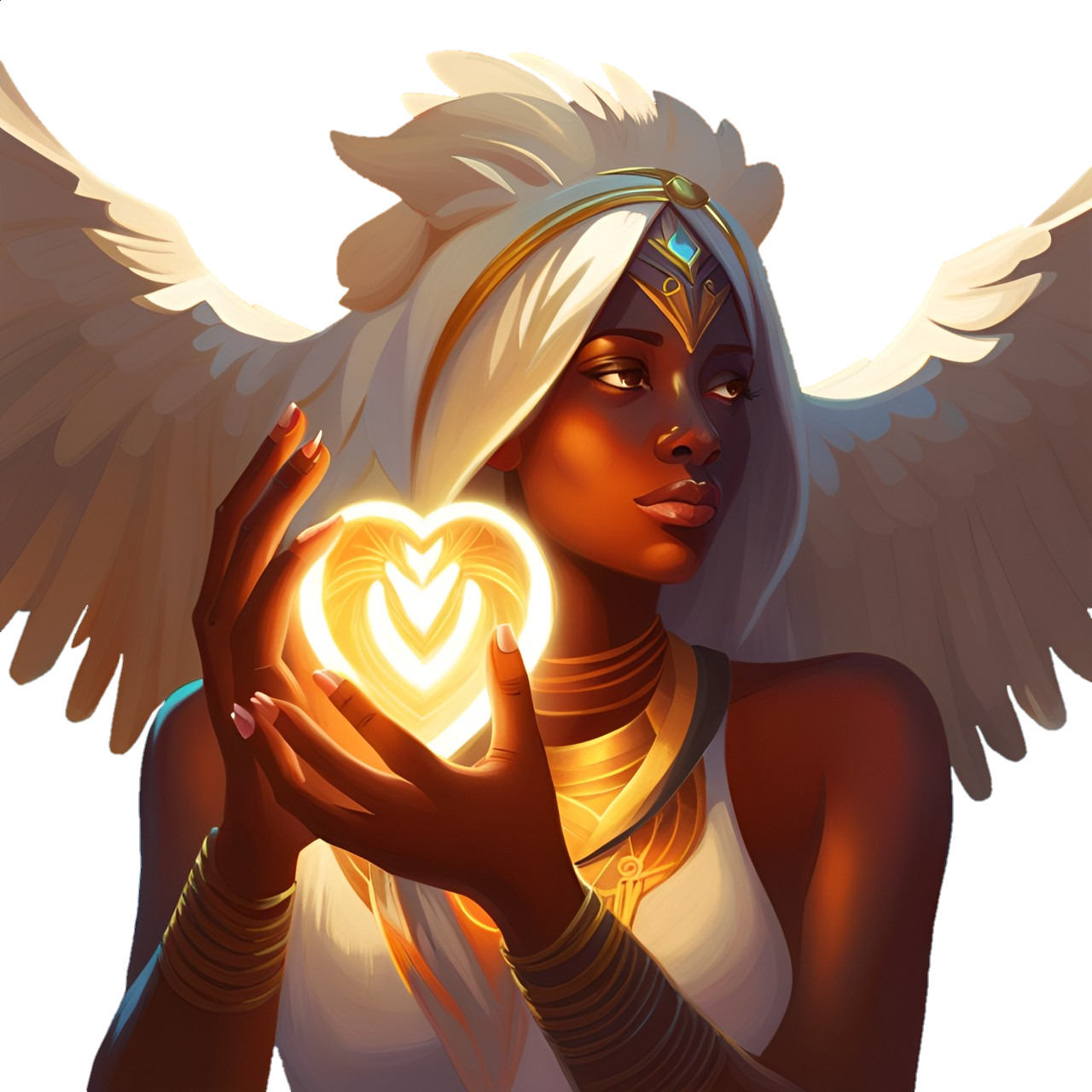Masriyyin Vulture
This is a visually stunning vulture with bright white plumage and an yellow-orange bare face. It spends much of its time soaring on desert thermals above the Shamsi Desert and migrates Eluziar in spring. Despite their flashy appearance, they are opportunistic scavengers, much of their diet leaving them disliked or viewed as unclean. They are actually fastidious with their hygeine but won't pass up gobbling up small mammals, birds or reptiles alongside their usual meals of carrion and feces. Unbothered by the bacteria in rotting flesh or vegetation, they have strong stomach acids. These are surprisingly intelligent birds too, using tools to break open ostrich eggs! Yet perhaps what they are most famous for is their ability to heal themselves using radiant energy, diving into the miniature suns of the Shamsi Desert and emerging renewed--an ability only shared with the revered Bennu Phoenix!
|
Rithaldis' Rebirth
Rithaldis's Rebirth is a rare and unique manifestation that is often confused with Diet. Like Diet, they are able to consume and absorb radiant energy and use it to heal themselves. This radiant energy can take the form of strong sunlight, solar plasma or even ionizing radiation. This manifestation allows them to heal from any injury even if they are on the brink of death, so long as the radiant energy is strong enough. Some believe it even extends their lifespan!
Emryl's Sense
Using Emryl's Sense, this species can feel the world around them via temperature, feeling the precise heat of everything around them. More than anything, they can feel high temperatures in their environment even through barriers. Mostly used to detect thermals in the desert or highlands to conserve energy. They are also heatproof.
|
Anatomy |
This bird is easily recognizable for its bright yellow face and white and black feathers. The bill of a Masryeen Vulture is slender and long with a hooked tip and their nostril is a long, horizontal slit. Their feathers form a hackle along their neck. Their wings are pointed and their tail is wedge-shaped while their legs are pink with long, straight claws. |
SensesThanks to Emryl's Sense, Masriyyin Vultures are highly perceptive to heat, key in detecting live prey and especially useful for detect thermal updrafts in desert skie! Unlike the majority of organisms in Shamsi, masriyyin vultures are diurnal, active most during the day when these thermals are more prevalent, thermals which allow them to glide effortlessly over hot sands and conserve energy. They use the same technique in Gaarreen Ho'aa and their magic also leaves them heatproof, a useful adaption in this habitat which is also called the Smoldering Highlands. |
Behavior |
These vultures are usually solitary or travel in mated pairs, gliding over thermals alongside other birds of prey or seated atop high perches. They are cautious, patient and inventive, waiting for larger animals to finish eating before taking their share. They are known to use tools too! They break into the tough shell of ostrich eggs using rounded pebbles and stones or might even drop stones onto the eggs from high up. But this isn't limited to food, they have even been seen collecting wool or cotton for their nest by rolling it around a stick! Because of their success in breaking these open, they are often subject to kleptoparasitism (other animals stealing their food). Itri Ravens in particular will flock together to overtake an opened egg. Vulture hatchlings are subject to predation too, mostly by eagles and Jah Eagle-Owl while those who fall from the nest are also vulnerable to Wata Jackal and Ayyur Fox. These birds don't vocalize often but when they do, they make a high-pitched mewing or hissing and might screech at each other over food. When threatened, they will often hiss or even growl. |
Habitat |
Masryeen vultures are fairly migrant, travelling between their home range and Eluziar to breed every spring. Some don't go particularly far, brooding in Sesli Plato or Flumen Pontem while others travel much further, roosting in the cliffs of the Eluzian coast or Hellas. Outside of breeding, they live in Shamsi Desert, Kemet, Kna'an, Arabiyyan Desert, Balkurtiz, Arya, Kasar Wuta and Gaarreen Ho'aa.
These scavengers make use of thermals to glide over wide open spaces in search of carrion, feces and occasionally prey. They have great stamina and can fly almost 45 miles (70 km) a day, more on days with plentiful thermal updrafts. They do so over dry plains, low hills and open desert or semi-desert. They may also be found in mountainous areas, usually only ascending to locations up to 6,600 ft (2,000 m) above sea level. They don't often make long crossings over water, sticking to land and sometimes roosting in rocky cliffs, ledges of tall buildings and on large trees. They also will not cross over into Skaney, sticking to the canyons of Flumen Pontem, or over the frigid waters of the northern sea. Their preference for warm air keeps them from migrating into the Frozen Wastes but they do have a cousin species more adapted to these colder biomes, these cousins reaching all the way to Bharat! |
Diet |
Masryeen Vulture are indiscriminate scavengers and opportunistic hunters, feeding on anything they can find in the scarce deserts and arid mountains they call home. Whether this means tearing into rotting carrion, picking apart feces or digging through rancid garbage, they take what they can get. They might also feed on the eggs of other large birds, especially those of Mefkaht Ostritch. Aside from scavenging, their prey includes the Qafz Jerboa, Isk Viper, Asp Viper, Mul'ataa Agama, Khepri Scarab and al-Mawt Scorpion. When a number of scavengers gather around a large carcass, many attracted to the smell, they allow the largest male to feed first and avoid disturbing larger predators like the Manid Hyena, waiting in the periphery for them to leave. However, thanks to the variety in their diet they rarely go hungry! |
Life Cycle |
These vultures breed in spring, courting pairs soaring together and making steep, spiralling or swooping dives to impress each other! These are a monogomous species, forming pairs and sometimes maintaining their pairing for more than one breeding season, even reusing the same nest the next year. These nests are formed on uneven platforms, usually cliffs, made of twigs and lined with various materials like, cotton, grass, wool, animal hair or bits of cloth. Sometimes they may use the ledge of a building, a small cave or the fork of a large tree. Flumen Pontem is the most popular site for breeding thanks to a plethora of cliffs and caves.
It isn't uncommon for the female to mate with another bird, the male rarely leaving her side before and during egg laying to deter this behavior. Females have even been observed with two different males, both of these helping to raise the resulting eggs. There are usually 2-3 eggs, incubated in shifts by all parents. Eggs are brick red with blotches of red, brown and black. These don't always hatch at the same time, the first egg hatching after 39-45 days while the second may hatch up to five days later. Many of these nests are clustered onto the same cliffs and daring chicks may even invade other nests for extra food! Most fledgelings leave the nest after 90-110 days but still remain dependant on their parents for another month or more. They will leave their parents terrritory once they are old enough to forage for themselves. They typically stay in Flumen Pontem until they are one year old, migrating into Alkelbulan and staying for at least 1-3 years before migrating back in spring. Young vultures tend to migrate and search more widely for food and mates than older individuals. |
Myth |
Masryeen Vultures have a variety of less than flattering names thanks to their diet. These includes being called a gier-eagle meaning greedy eagle, churretero and moniguero meaning dung-eater and shawks which is short for shit hawks. However, they are a sacred animal to the Masryeen, a symbol of royalty, motherhood and sometimes called the pharaoh's chicken. In Sesli Plato and Hellas, they are associated with spring as this is when they migrate into Eluziar. The Turkler even have a folktale about one of these birds risking their life to protect Lithmor from the claws of a golden eagle, referring to these vultures as akbuba. At the end of this tale, Lithmor rewards the dying vulture with eternal life and white plumage as a symbol of their purity, wisdom and bravery. Meanwhile, the Yehudim view this bird as unclean and unsuitable for eating but they also view it as a loving and doting animal, commited to their mates. The Quiris, who most often host these birds in spring, consider them messengers of the gods alongside most other birds. Quiris mages attempt to divine luck by watching the flight of these vultures in a technique called augury. The founding of Centrum is even fabled to have been determined by this method.
While some in Eluziar look down on Masryeen Vultures, they are respected and even revered in Alkelbulan, especially by the Masriyyin. They are associated with the pharaonic line, deities often depicted wearing vulture headresses, and are heraldic symbols for all of Upper Kemet. They are symbols of feminity, purity, motherhood and of maternal protection. Because of this, the vulture headdress came to be linked to all queens, goddesses and royal women. When the vulture headdress is worn by a queen, it indicates that she is a divine being akin to a goddess--most of Ilnid's Masriyyin daughters will wear this headress when they rule in his stead. Within Netjer Pesedjet and especially within the cult of Nekhebet, masriyyin vulture are linked to the eternal cycle of death and rebirth thanks to their role in the food chain and their healing abilities. They feed on death and waste, transforming it into life, soaring elegantly in the sky with that energy. They in fact believe that all masriyyin vultures are female, Nekhebet being the first mother to exist in their folklore. They believe these birds are born without the aid of males, symbolizing an eternal cycle of death and rebirth, flying into the sun when they become old and being reborn! Instances of wounded vultures diving into miniature suns or the waters of al-Nil and reviving themselves on their energies certainly promote their views. They are most associated with the goddesses Nekhebet, Mut, Satet and Isis. Mut is the goddess of motherhood and is almost always depicted with a vulture headdress. The vulture's expansive wingspan are seen as all-embracing prrotectors, akin to mothers sheltering their children. Isis is considered queen of the gods and is also known to wear the vulture headdress along with horns with the sun between them and the heiroglyph for throne. Vultures are considered sacred to Isis, any who kill these birds sentenced to death! Satet is the goddess of al-Nil, also wearing a vulture crown of Upper Kemet fused with antelope horns. While the vulture is a symbol of motherly love and protection, antelope horns represent the power of spiritual love. In this way, Satet portrays qualities of delicate beauty, maternal protection, spiritual love and the life-giving powers of al-Nil. Finally, Nekhbet is usually portrayed either as a vulture-headed woman or a woman wearing the vulture headdress of Upper Kemet and dressed in garments madde of vulture feathers. This is because Nekhbet is seen as the mother of the pharaonic line. Her high priestess usually wears these garments and most are chosen because they possess kaithur granting them the form of a Masriyyin Vulture! |














Comments